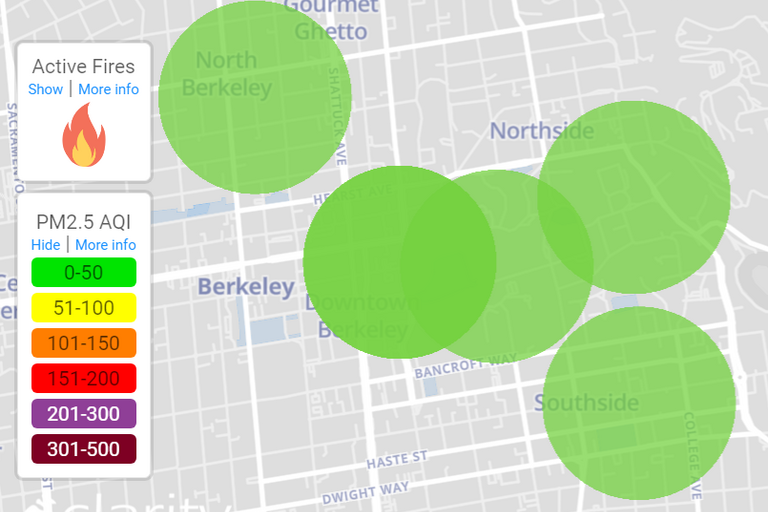
Providing resources and guidance for the UC Berkeley community to reduce exposure to wildfire smoke.
Preparing for Wildfires and Smoke
Departments and employees are encouraged to prepare for potential wildfire and smoke impacts by taking the following actions.
Update your information at WarnMe.berkeley.edu
UC Berkeley uses Warn Me to provide notification to campus in an emergency. Please check your information at warnme.berkeley.edu and register a mobile number to receive text notifications.
Know your Zone
The City of Berkeley and counties throughout the Bay Area now use Genasys Protect to help prepare for wildfire. Please visit protect.genasys.com to learn about your household's evacuation zone and warning orders should your zone be affected.
Monitor Conditions
Air quality may change quickly depending on wildfire intensity and weather conditions. UC Berkeley has installed sensors at five major buildings across campus and also monitors the EPA AirNow "Current Air Quality" and the Fire & Smoke Map.
The nearest regulatory monitors are at Berkeley Aquatic Park, Laney College in Oakland, and the West Oakland monitor on West Grand Avenue in Oakland. The on-campus sensors are located at Valley Life Sciences Building, Stanley Hall, University Hall, Lawrence Hall of Sciences, and Crossroads Dining Common. The Campus Air Quality Map updates air quality from these sources hourly.
Review Health Information
During smoke events, fine particulates suspended in the air are the main harmful pollutant. Breathing in smoke can have immediate effects including trouble breathing, stinging eyes, and headaches, even to someone who is healthy. If you would like to know more about the symptoms visit the CDC's Wildfire Smoke web page. We encourage you to see your medical provider if you experience wildfire smoke-related symptoms.
Complete Wildfire Smoke Training
Outdoor workers should complete the following Cal/OSHA required training.
Limit Exposure
When air quality worsens, minimize strenuous activity outdoors. The campus has posted a list of cleaner air facilities and buildings that have mechanical ventilation filtration systems that are effective at reducing smoke indoors.
Specific actions to minimize exposure to wildfire smoke can be viewed from the University of California AQI-Based Decision-Making Matrix for Wildfire Smoke Events (Version 1.1).
Understand the difference between respirators and face coverings
Cloth face coverings and surgical masks may filter out large particulates but offer little protection against harmful air pollutants in wildfire smoke.
Use of particulate respirators such as N95 respirators filter out some of the particulate matter, but they do not filter all the harmful chemicals found in smoke. They can also increase the work of breathing, which can be harmful for people with significant underlying heart or lung conditions. The campus offers N95 respirators, subject to availability, to all employees when the current Air Quality Index (AQI) exceeds 150 due to wildfire smoke. It is recommended that you consult a medical provider before using an N95. Further instructions will be provided on N95 distribution if the campus is impacted by unhealthy air quality.
Plan for potential power outages
PG&E initiates a public safety power shutdown (PSPS) program regionally in the interest of public safety to reduce wildfire risk from transmission lines during severe dry, windy conditions. While the campus is generally able to avoid a complete power shutdown due to the operation of our cogeneration plant, it is important for all operations to have a plan in place to reduce energy usage. Go to the PG&E PSPS website for more information and consider that employees working from home may be impacted even if campus operations are not.
Review the campus Power Failure Preparedness Fact Sheet for information on how to prepare for a power outage.



